2025 Royal Enfield Guerrilla 450 Review
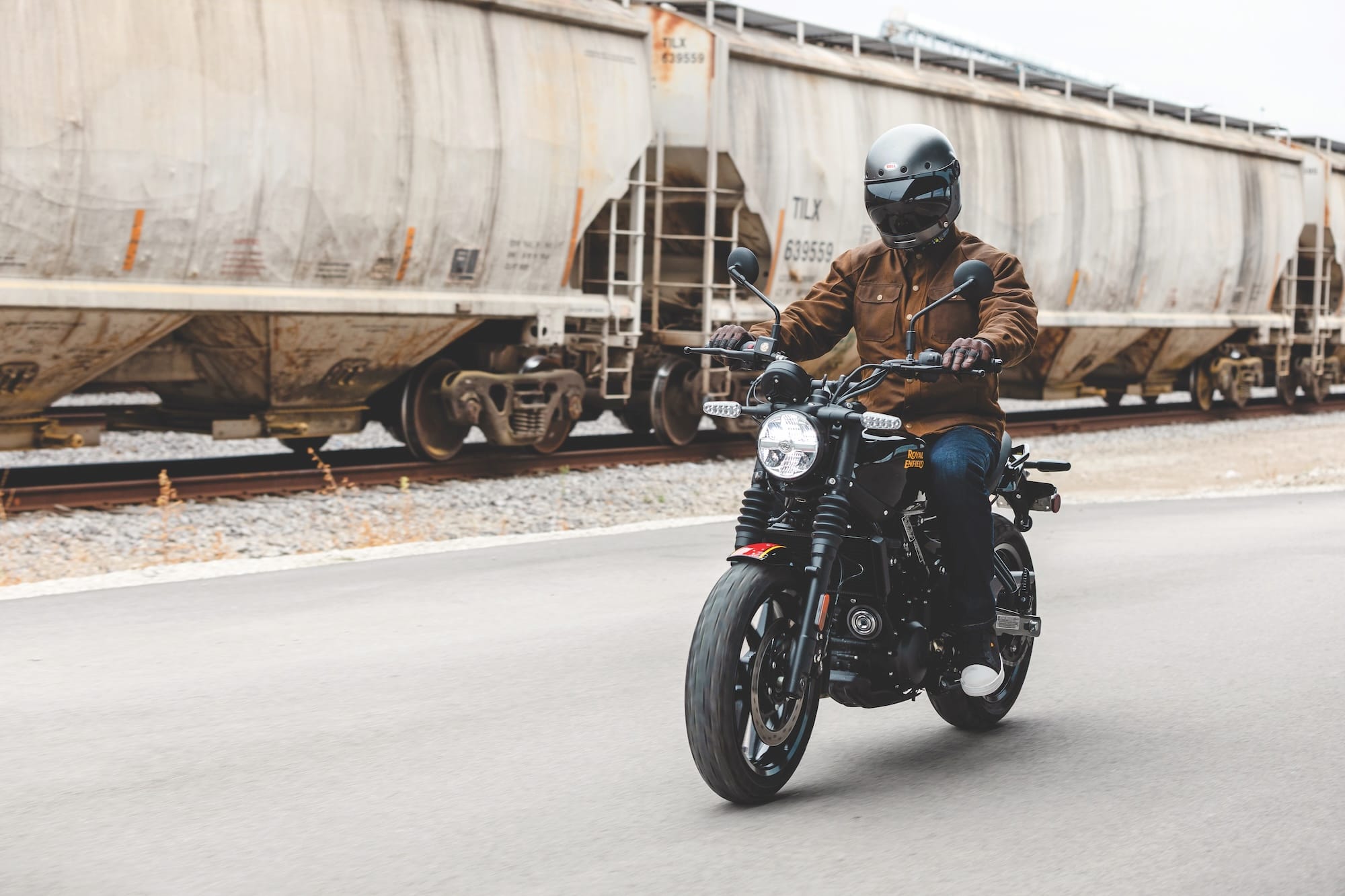
In May 2014, I had the opportunity to ride Royal Enfield’s initial American offering: the Continental GT. Revisiting my notes from that time, the bike was as I remembered it—a paint shaker disguised as a café racer. That decade-old experience stands in stark contrast to my recent ride aboard the 2025 Guerrilla 450.
Powered by the new Sherpa engine, first deployed in the Himalayan 450 last year, the Guerrilla joins its predecessor at the vanguard of Royal Enfield's technological envelope. Gone are the downtubes of the cradle frames associated with other Enfields. Instead, they’re replaced by a tubular steel twin-spar frame using the engine as a stressed member. Both the Guerrilla and Himalayan also utilize a rising-rate linkage-type shock with pronounced horizontal positioning.
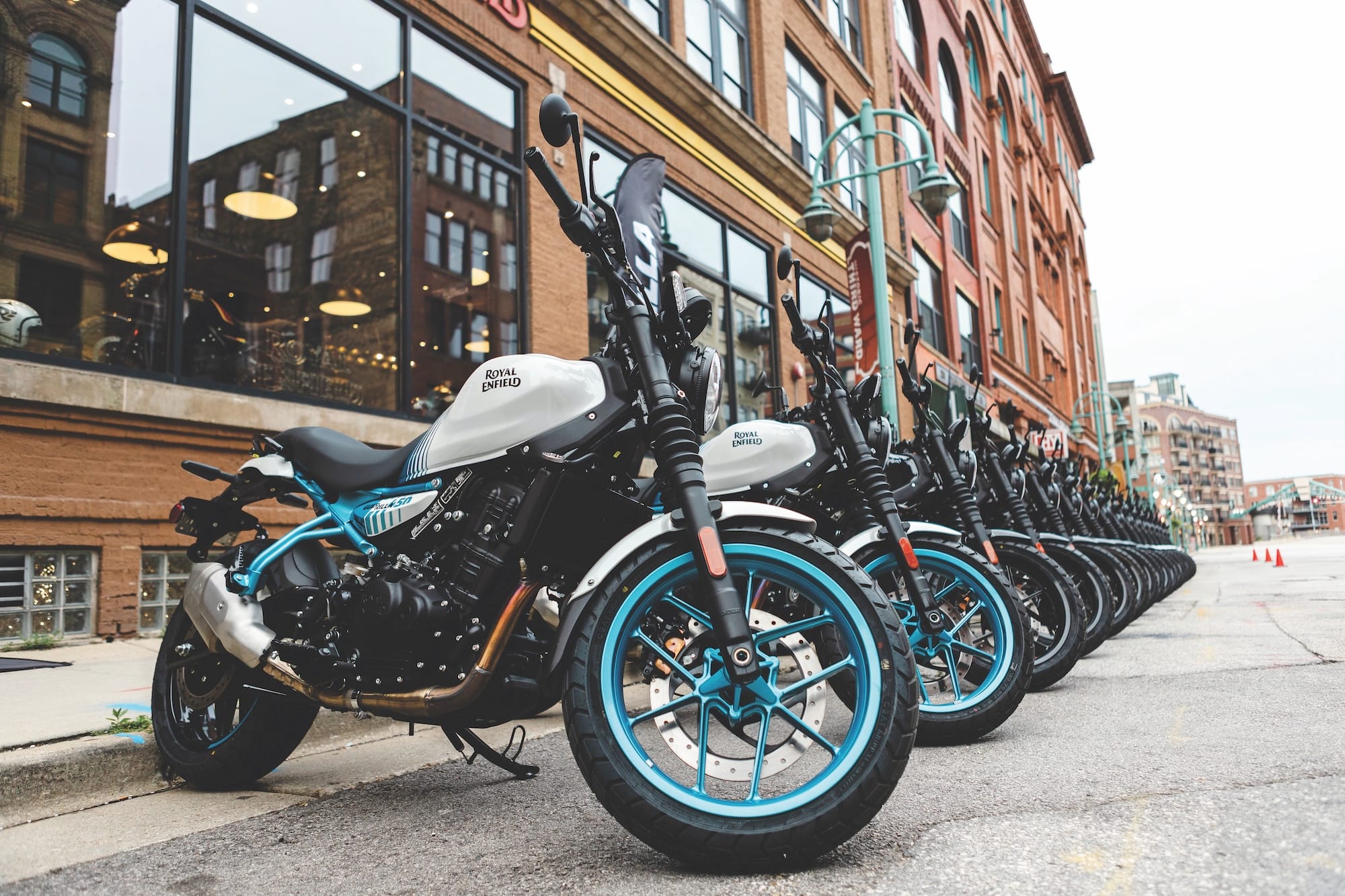
In the grand scheme of motorcycling, these technologies are not cutting edge. They do, however, represent an evolving ethos of a company with 10 other models, all of which sport cradle frames, twin shocks, and air cooling. Royal Enfield deserves applause for stepping outside its comfort zone. The threat the company now faces with the $5,299 Guerrilla 450 is direct competition with motorcycles from established brands, such as the CFMoto 450NK ($5,399), Kawasaki Z500 ($5,599), KTM 390 Duke ($5,899), Husqvarna Vitpilen 401 ($5,899, 2024 model), and Triumph Speed 400 ($5,295).
Styling is often a significant factor when purchasing a motorcycle. In this case, only the Triumph Speed 400, with its modern interpretation of a classic roadster, warrants serious consideration for cross-shopping. Royal Enfield is adamant that the Guerrilla is not a nostalgic bike, but rather a modern naked roadster. Fair enough, but what about those fork gaiters?
Progress
Just how far has Royal Enfield come since that first Continental GT? The 535cc, air-cooled, OHV, two-valve single powering the GT had an undersquare bore and stroke of 87mm x 90mm, an 8.5:1 compression ratio, and produced an underwhelming 29.1 horsepower at 5,100 rpm and 32.5 lb-ft of torque at 4000 rpm, all for $700 more than the Guerrilla.

By comparison, the Guerrilla’s 452cc liquid-cooled, DOHC, four-valve single has an oversquare bore and stroke of 84mm x 81.5mm, an 11.5:1 compression ratio, and produces a much more respectable 39.5 ponies at 8,000 rpm and 29.5 lb-ft of torque at 5,500 rpm. These numbers also put the Guerrilla on equal terms with the Triumph Speed 400, which has very similar specifications.
Perhaps more important than all of this is that, unlike the Continental GT, the Guerrilla 450 features a counterbalancer. Smooth power delivery was a welcome attribute during my test ride through Milwaukee and the surrounding countryside. I felt some minor vibrations through the seat and the rubber-mounted footpegs and handlebar, particularly when I lugged the engine from lower in the rpm range or near its redline. Otherwise, it’s a smooth operator. The power resides in the low to middle rev range, providing ample oomph for navigating city traffic or tight, twisty backroads. You can get to freeway speeds, but passing power isn’t abundant when traveling that fast.
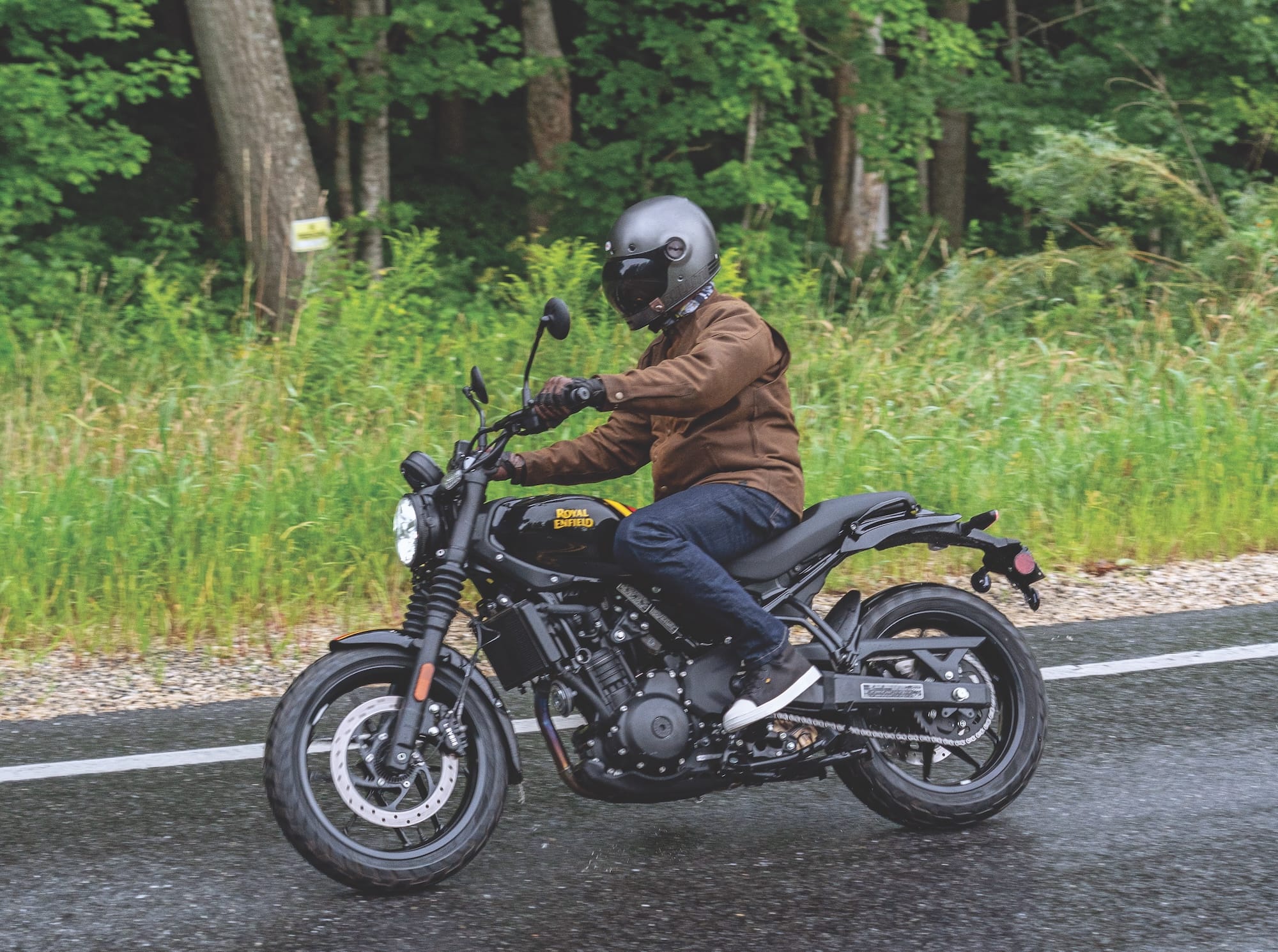
Other modernities include a very natural feeling ride-by-wire system and a wet multiplate clutch featuring slip and assist for easily rowing the six-speed gearbox. The round four-inch full-color display is mounted above the headlight and features phone integration via Enfield’s Tripper software. Manipulating displayed information, switching ride modes, or accessing the phone happens via a joystick mounted on the left grip. The joystick demands very precise inputs or you’ll find yourself changing display settings rather than resetting the trip meter. Below the instrument cluster is a USB-C charging port.
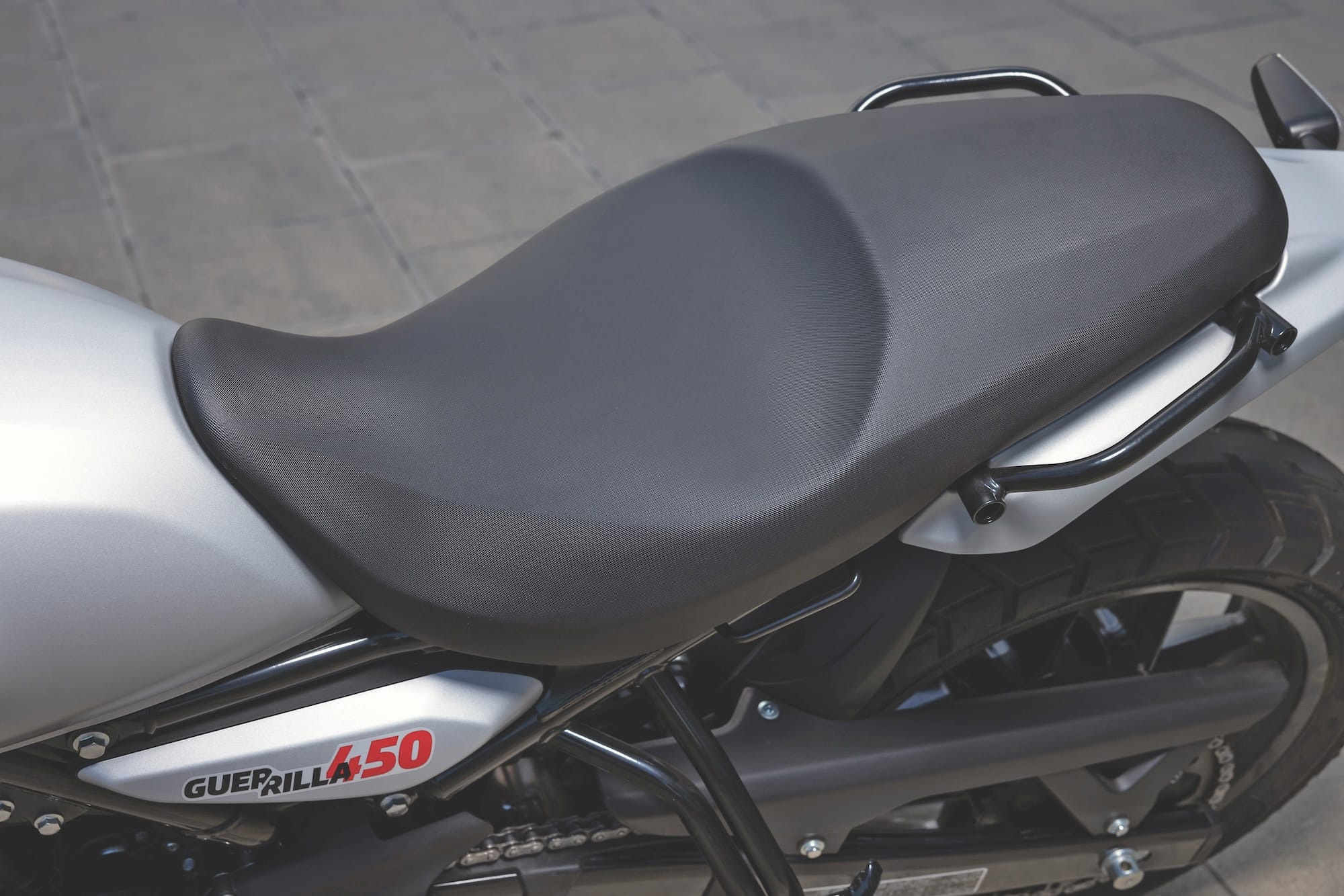
The Guerrilla’s two ride modes—Performance and Eco—are switchable via the “M” button on the right grip. You can change from one to the other while in motion, but the process requires you to close the throttle and disengage the clutch. The Performance mode sharpens the throttle response and unleashes the full vigor of the Sherpa single, while the Eco mode deliberately softens throttle behavior in the first four gears, producing a gentler delivery. The latter setting can feel jolting when dropping back into lower gears after cruising at a high speed, as the power cuts immediately.
Perspective
Ridden within legal parameters at docile speeds and minimum aggression levels, the Guerrilla 450 is a performance virtuoso. I know this because our group was led on a meandering, moderately paced ride, hoping to avoid a mid-summer Wisconsin thunderstorm. It wasn’t until another journalist and I ran low on fuel and broke away from the main group to fill up that we were able to up the pace. This lasted for about five corners until we hit traffic. The Guerrilla 450 was fun to spend the day aboard and performed the tasks it was given within the confines of moderation.

The Guerrilla’s non-adjustable, conventional telescopic fork, with 43mm stanchions and 5.5 inches of travel, seems well-damped from the factory, at least on the smooth surfaces of rural Wisconsin. It also absorbed any pavement cracks the city threw at it. The preload-adjustable shock was in its lowest setting but also performed well, especially considering it is Royal Enfield’s first attempt with a progressive rate linkage-type arrangement.
The front dual-piston ByBre caliper clamps down on a single 310mm disc, providing a firm yet smooth initial bite and progressive feel as you apply more pressure. The one-sided arrangement cuts both costs and unsuspended, reciprocating weight. The rear single-piston ByBre caliper and 270mm disc provide complementary stopping power. A non-defeatable ABS is an added safety benefit on the $5,300 motorcycle.
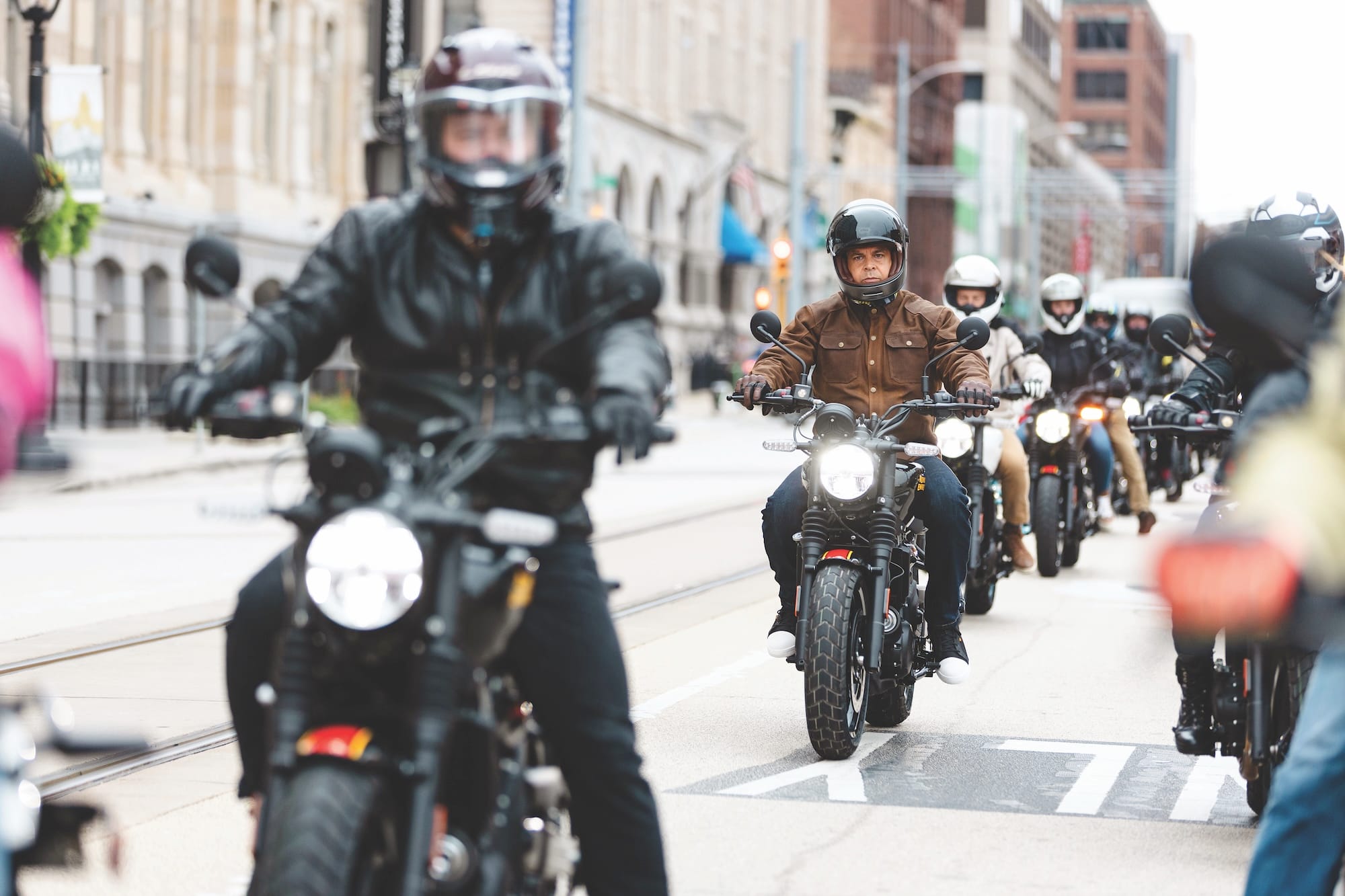
The 407-pound wet weight of the Guerrilla is made even more manageable by the bike’s 30.7-inch seat height. For comparison, the Guerrilla only holds 2.9 gallons of fuel, as opposed to the Triumph Speed 400’s fuel capacity of 3.4 gallons and claimed wet weight of 375 pounds. I definitely did not suffer from small-bike syndrome during my test. The rider triangle was inviting to my 5-foot-11-inch frame with plenty of legroom and a nicely shaped and padded seat. I did notice the stock mirrors are on the small side, which made seeing what’s behind you somewhat challenging.
Course Trajectory
Over lunch during the Continental GT media ride in 2014, I had the opportunity to chat with Enfield’s CEO, Siddhartha Lal. He explained that Enfields are products of simplicity and dependability—a very sensible approach to motorcycle production in India with more unpaved than paved roads. In America, the marque’s roster has grown from that lonesome Continental GT to 14 current models. There are also 152 Royal Enfield dealers in the U.S., marking an impressive expansion.
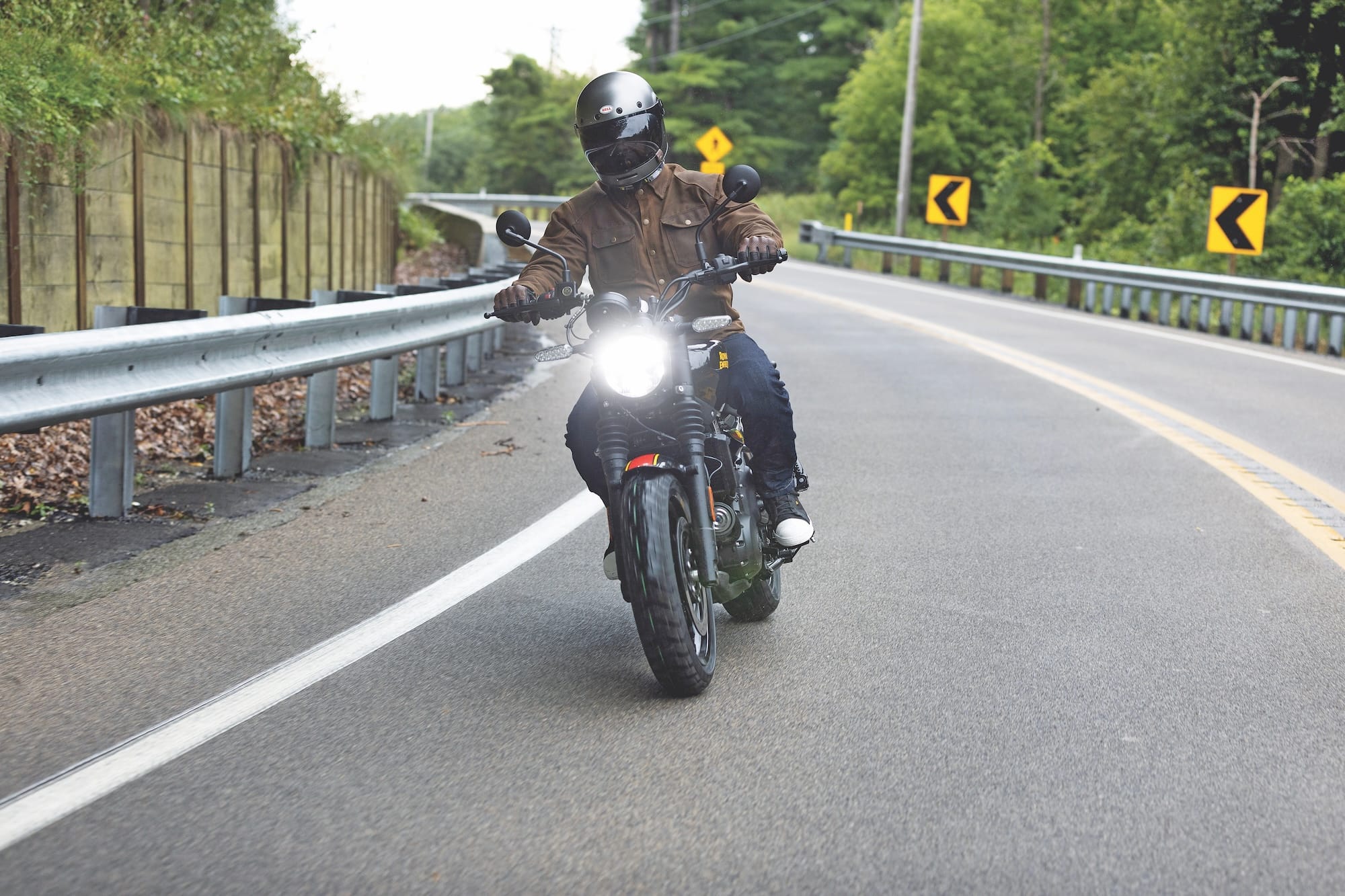
I have yet to ride the Speed 400, but based on the Guerrilla's performance, price, spec sheet, and style, this new Enfield appears to be Triumph's equal. The Guerrilla is everything you'd expect from a modern, small-displacement roadster, and is a real head-turner in its Brava Blue color scheme. However, competing on a global scale against technological giants such as Triumph demands Royal Enfield to step up its game if it wants to keep grabbing more market share. The Guerrilla 450 showcases Royal Enfield’s readiness to evolve, serving as a strong hint of the brand’s future direction.
Technical Specs
+affordable, smooth, comfortable
-electronics interface, fuel capacity, on the heavy side
Distributor: Royal Enfield
MSRP: $5,299
Engine: single-cylinder, DOHC, 4-valves, liquid-cooled
Displacement: 452cc
Power: 39.48hp @8,000rpm; 29.5lb-ft @5,500rpm
Transmission: 6-speed, chain final drive
Rake/Trail: 21.8°/3.6in
Weight (Wet): 407lbs
Seat Height: 30.7in
Fuel Capacity: 2.9gal
Fuel Consumption: 70mpg (claimed)
Fuel Grade: regular
Color: Brava Blue, Playa Black, Smoke Silver
